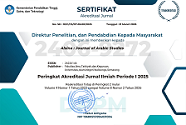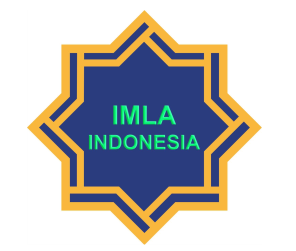Women and Angry Speech: A Case Study of The Saudi Arabian Takki Series
Abstract
This study aims to reveal the forms of illocutionary acts and impoliteness strategies in anger utterances directed at women in the Saudi Arabian series Takki. In Arab culture, angry utterances are not merely emotional expressions but serve as tools for enforcing social norms and patriarchal control. This research applies a descriptive qualitative method with a pragmatic approach. The data, consisting of dialogue excerpts, were analyzed using Searle's speech act theory and Culpeper's theory of impoliteness. The results show that anger utterances in Takki are dominated by directive, expressive, commissive, and declarative acts, accompanied by impoliteness strategies, including insults, prohibitions, threats, and verbal abuse. These utterances reflect unequal power relations between men and women and reinforce patriarchal structures in Saudi society. This study confirms that language functions as a significant tool of social control in cultures where family honor is paramount.
Downloads
References
Anis, M. Y. (2020). The Form and Background of the Emergence of Hate Speech in Arabic: Morphological and Pragmatic Analysis. Letters, 32(1), 119–134. https://doi.org/10.29255/aksara.v32i1.447.119-134
Aura, Hafizhah. (2021). Gender Analysis and Social Transformation by Dr. Mansour Fakih.
Culpeper, J. (n.d.). SIL Electronic Book Reviews 2012-003 Impoliteness: Using language to cause offence.
Culpeper Jonathan. (2013). Impoliteness.
Dwairy, M., Achoui, M., Abouserie, R., Farah, A., Sakhleh, A. A., Fayad, M., & Khan, H. K. (2006). Parenting styles in arab societies: A first cross-regional research study. Journal of Cross-Cultural Psychology, 37(3), 230–247. https://doi.org/10.1177/0022022106286922
Fauzie, N. A., & Kholisin, K. (2023). Arabic Illocutionary Speech Acts On Twitter With The Theme Of Love. Ijaz Arabi Journal of Arabic Learning, 6(1). https://doi.org/10.18860/ijazarabi.v6i1.17167
Feghali, E. (1997). Arab Cultural Communication Patterns. In Inr. J. Intercultural Rel (Vol. 21, Issue 3). 10.1016/S0147-1767(97)00005-9
Husein, S., Kholisin, K., & Ginsburg, S. (2023). Illocutionary Speech Acts of Assertive, Directive, Expressive, Commissive, and Declarative in the Tweets of Jibran Khalil Jibran Account. Arabiyatuna: Journal of Arabic, 7(2 November), 541. https://doi.org/10.29240/jba.v7i2.8257
Islam, U., Sunan, N., & Djati Bandung, G. (2023). Types and Functions of Speech in Ibn Sina's Animated Film. Hijai-Journal on Arabic Language and Literature | Alif Agung Fur-qon1, Fadlil Yani Ainusyamsi2. https://doi.org/10.15575/hijai.v6i1.13547
Haziza, P., & Rohmah Soekarba, S. (2023). Gender Norm in Saudi Arabia Within Takki The Series Directed By Mohammad Makki. Indonesian Journal of Arabic Studies, 5(2), 123–166. https://doi.org/10.24235/ijas
Nadiya Himmatuna Rusydah, Y. H. I. S. (2025). Image of female characters in the film Takki by Mohammad Makki. Scientific Journal of PHENOMENA: Indonesian Language and Literature Education http://dx.doi.org/10.25139/fn.v8i1%20Spesial.10208
Pebriyanti, E. T., Nugraha, T. C., & Malik, M. Z. A. (2025). Analysis of Illocutionary Speech in the Animated Film Muhammad Bin Ka'ab Al-Quradhy: A Pragmatic Study. Journal of Linguistic Phenomena, 3(2), 44–48. https://doi.org/10.24198/jlp.v3i2.59638
Permata Sari, I., Emmiyati, N., Maharani Asnur, S., & Maharani, S. (2019). Impoliteness Strategies in Peter Rabbit Movie (Vol. 6). https://doi.org/10.24252/elite.v6i2a9
Rupidara, I., & Suswandi, I. (n.d.). (2023). The Use of Speech in Expressing Anger in the Film Copying Cahaya by Wregas Bhanuteja. Journal of Language, 12. DOI:10.24114/kjb.v12i3.47549
Rusli, M. (2021). Design Basic/Descriptive Qualitative Research and Case Studies. Al-Ubudiyah Journal of Islamic Education and Studies.
Sadiqzade, Z. (2025). The Linguistic Expression of Emotion: A Cross-Cultural Analysis. EuroGlobal Journal of Linguistics and Language Education, 2(3), 42–54. https://doi.org/10.69760/egjlle.2500195
Saifudin, A. (2019). Speech Action Theory in Pragmatic Linguistic Studies. LITE: Journal of Language, Literature and Culture. https://doi.org/10.33633/lite.v15i1.2382
Sitanggang, N. P., Permana Sukma, B., Walangarei, S. F., Tegar, S., Research, B., & Nasional, D. I. (2024). The Degree of Illusory Hatred of Animal Names in Indonesian. 2, 353–371.
The Use Of Coarse Language In The Comments Section Of Sinar Harian Newspaper On The Facebook Platform. (n.d.).
Thorsen, E., & Sreedharan, C. (2019). #EndMaleGuardianship: Women's rights, social media, and the Arab public sphere. New Media and Society, 21(5), 1121–1140. https://doi.org/10.1177/1461444818821376
Yoyo, Y. (2019). Hate speech (Khitāb al-Karāhiyah) in the context of contemporary Arab socio-political contestation. Adabiy-yāt: Journal of Language and Literature, 3(1), 120. https://doi.org/10.14421/ajbs.2019.03106
Zaharna, R. S. (1995). Au rights of reproduction in any form reserved. Understanding Cultural Preferences of Arab Communication Patterns. Public Relations Review, 21(3), 241–255. https://doi.org/10.1016/0363-8111(95)90024-1
Published
How to Cite
Issue
Section
License

This work is licensed under a Creative Commons Attribution-NonCommercial-ShareAlike 4.0 International License.
Copyright
The copyright of the received article shall be assigned to the publisher of the journal. The intended copyright includes the right to publish the article in various forms (including reprints). The journal maintains the publishing rights to published articles. Authors are allowed to use their articles for any legal purposes deemed necessary without written permission from the journal, but with an acknowledgment to this journal of initial publication.
Licensing
In order for Alsina: Journal of Arabic Studies to publish and distribute research articles, the editors need publishing rights (transferred from author to publisher). This agreement relates to the transfer/publishing copyright license to Alsina: Journal of Arabic Studies but the authors still have significant rights to use and share their published articles.
Alsina: Journal of Arabic Studies supports the need for writers to share, disseminate and maximize the impact of their research and their rights on any database. As a journal article writer, you have the right to various uses of your articles, including that by the institution or company where you work. Copyright can be used without the need for special permission. Authors who publish articles in the Alsina: Journal of Arabic Studies have broad rights to use their work for teaching and scientific purposes without requesting permission, including:
- Use by the author for lectures, presentations, or conferences, with distribution of copies to participants;
- Distribution to colleagues for research use;
- Use in compilations of the author's subsequent work;
- inclusion in a thesis or dissertation;
- Reuse of sections or excerpts from articles in other works (with full acknowledgment of the final article);
- Preparation of derivative works (other than commercial purposes) (with full acknowledgment of the final article);
- Voluntary posting on open websites operated by authors’ or writers' agencies for scientific purposes
When submitting a manuscript, authors do so on the understanding that if accepted for publication, the copyright for publishing (publishing right) of the article shall be assigned/transferred to Alsina: Journal of Arabic Studies.
Authors whose articles are accepted for publication will receive confirmation via email and sent a Copyright Transfer Agreement.

 Accreditation
Accreditation 
 In Collaboration with
In Collaboration with 

 Visitors
Visitors  Article Template
Article Template





